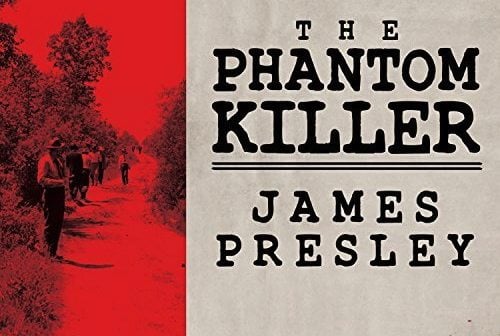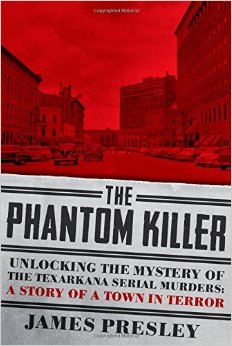
The Observer Review: James Presley’s The Phantom Killer
It’s been five years since the last new episode of Unsolved Mysteries aired, but that doesn’t mean Americans have lost their appetite for cold cases, especially ones involving murder—witness the runaway success of HBO’s The Jinx, which turned Robert Durst into a household name. So it’s no surprise that an author would turn to what are commonly referred to as the Texarkana Moonlight Murders, a 1946 series of slayings, shootings and beatings in and near the Texas-Arkansas border city. The man responsible, known as “the Phantom Killer,” was never caught.
For years, true-crime aficionados and armchair detectives have debated what the Texas Department of Public Safety called “the Number One unsolved murder case” in the history of the state. The Phantom Killer has been the subject of books and at least one cult-classic film (the relentlessly cheesy 1976 B movie The Town That Dreaded Sundown; remade in 2014). But it’s likely that no writer has researched the case more deeply than Texarkana historian James Presley, author of The Phantom Killer: Unlocking the Mystery of the Texarkana Serial Murders: The Story of a Town in Terror.

James Presley
Pegasus Books
400 pages; $26.95
Presley has good reason to be obsessed with the case. One of the lead investigators of the slayings was Bowie County Sheriff Bill Presley, the author’s uncle. But The Phantom Killer isn’t just the work of a historian determined to solve the case whose solution eluded his uncle—it’s an exhaustive and, one could argue, definitive look at one of the most mysterious crimes in the region’s history, and a town forced to reckon with the aftermath.
Presley sets up The Phantom Killer with a great depiction of 1946 Texarkana: “unnoticed, the abandoned stepchild of both states.” The city had been known for violence and general lawlessness for years, even if it hadn’t yet been subjected to a series of killings as brutal as the Moonlight Murders. Presley narrates the escalating violence in grim detail: Jimmy Hollis, beaten nearly to death, and his girlfriend Mary Jeanne Larey, sexually assaulted with a gun; Richard Griffin and Polly Ann Moore, shot to death on a lovers’ lane; teenagers Paul Martin and Betty Jo Booker, shot to death; and Katie and Virgil Starks, shot in their home, fatally in Virgil’s case.
Presley’s depiction of the assaults and the long, tortuous investigation that followed is as detailed and well-researched as one could hope for. And while the inside-baseball sections tracking the law enforcement response can be a bit plodding, Presley makes up for it by painting a fascinating portrait of the city in the days after World War II, and of the people trying desperately to find the killer—in particular, the legendary and endlessly colorful Texas Ranger Manuel T. “Lone Wolf” Gonzaullas.
Does Presley succeed in identifying the Phantom Killer? It’s impossible to know at this point, but he makes an extremely compelling case that the murderer was Youell Swinney, an Arkansas man with a history of petty crimes. Swinney died in 1998, but, Presley writes, “received the notoriety he craved, in this book.” It’s hard to argue with Presley’s detective work, and it’s definitely fascinating to see how he arrives at the conclusion.
The Phantom Killer probably isn’t for everyone. Presley’s prose can be repetitive, and he includes an almost overwhelming amount of detail about every possible aspect of the case. But while that might turn off some casual readers, his intended audience of true-crime devotees, Texas history fans and readers with an interest in the Texarkana area will find the book an admirably detailed account of one of the most horrifying crime sprees ever to hit the Lone Star State.


